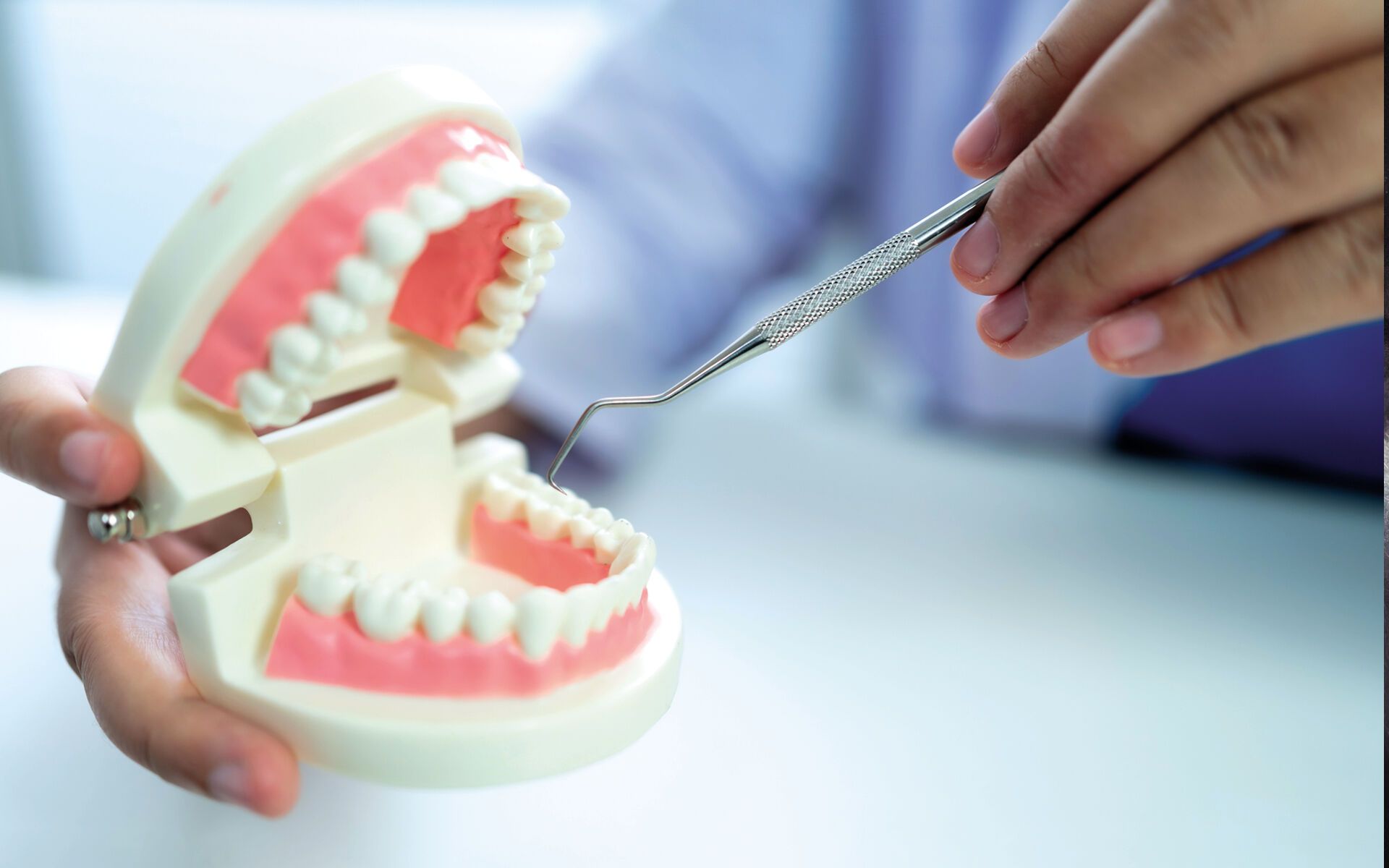The Teeth – Wisdom With a Crown

In This Article
-
Teeth are assigned with the duties of chipping, chewing, and speaking, serving as perfect examples of creation with their aesthetics, gloss, and structurally solid function.
-
Enamel provides a protective covering for dentin and dental pulp. It is the hardest organic material known, extending from the gingiva level and composed of 96 percent mineral (calcium salts), 2 percent organic tissue, and 2 percent water.
-
Our teeth are extremely hard, but living structures, and they are found nowhere else in our bodies. They happen to be in their perfect locations and sequence in the lower and upper jaws, fitting perfectly with each other and in an aesthetic manner.
Visiting the dentist is a nightmare for most of us, especially children. It is also one of the moments when we truly appreciate our teeth. If we have to undergo costly treatments such as dental implants or bridges, we also realize their financial value. We usually visit a dentist after attempting to crack hard objects with our teeth or consuming excessive fizzy drinks, or when we fail to maintain proper oral hygiene. Leftover food waste in our mouths can accumulate and eventually lead to the formation of bacterial plaques. Bacteria use the glucose in this plaque to produce acid, which in turn causes cavities in our teeth or gingival diseases.
Structure of our teeth
When we examine our teeth under a microscope, we can observe zigzagging curves, indentations, and protrusions on their surfaces. These protrusions, known as tubercles, serve important roles in chewing and aesthetics. They are formed with remarkable precision, often differing by mere millimeters depending on a person's age and the specific tooth. Teeth in the upper and lower jaws are positioned in such a way that there is a perfect alignment between these indentations and protrusions. Dentists ensure the ideal fit of a denture in a patient's mouth by verifying the proper implementation of these indentations and protrusions. Teeth are assigned with the duties of chipping, chewing, and speaking, serving as perfect examples of creation with their aesthetics, gloss, and structurally solid function. Incisors are sharp and serve the purpose of biting off food. Canines are pointed and they are used to tear food apart. Molars are created to grind food like grindstones.
If all of our teeth had been of the same type – if we had 32 canines or incisors, for instance – it would be virtually impossible for us to eat food. This perfect design regarding our teeth can be seen in their arrangement as well. Every tooth is situated in its optimal position, with incisors at the front and molars at the back of our mouth. If our incisors were replaced with molars, this finely tuned organ would become useless. While calcium (Ca) plays the central role in giving teeth their hard and resistant structure, phosphorous (P), magnesium (Mg) and potassium (K) salts are also critical. During the embryo stage, millions of cells store calcium before aligning in the jaws to form a large block in a convenient shape. In this process, cellular groups in the lower palate position themselves to correspond with those in the upper palate, moving as if they were seeing each other. This alignment ensures that jaws can later close correctly and perform proper chewing movements. The resulting array and shapes of teeth are special and unique, much like fingerprints.
Parts
A tooth has two main parts: a crown and a root [1]. The white and porcelain-like part of a tooth visible inside the mouth is called the crown while the part that is not visible from outside and secures the tooth to the jawbone is named the root. The crown is made of – from the inside out – enamel, dentin, and dental pulp. Cementum, which is a special substance that ensures attachment of the tooth to the jawbone, can be listed as a separate layer. The distribution and thickness of cementum vary depending on particular teeth and it is 65 percent mineral, 23 percent organic material and 12 percent water.
Enamel provides a protective covering for dentin and dental pulp. It is the hardest organic material known, extending from the gingiva level and composed of 96 percent mineral (calcium salts), 2 percent organic tissue, and 2 percent water. Its ranking on the Mohs hardness scale is 7 (compared to 10 for diamond), allowing teeth to be more resistant to the forces exerted upon them. The enamel on the surfaces where chewing takes places experiences the highest load and are as thick as between 2-2.5 mm; this thickness decreases to 0.1 mm in the sections closer to the gingiva. Enamel actually does not have a smooth surface; rather, it features small crevices that are not very deep. When examined under a microscope, it is observed that the enamel layer consists of hexagonal columns extending from the surface to dentin, without allowing any space between them. This intricate crevice and rod-like design showcase incredible wisdom as they effectively distribute pressure on the enamel, preventing damage to the tooth [2].
Dentin, which forms the largest part of a tooth, is a layer covering the pulp tissue that contains the nerve and capillary packages at the center of the tooth. While it is similar to other bones in the body, dentin is structurally different. With its hard bony structure, dentin is 70 percent mineral, 18 percent organic matter, 12 percent water, and it has some flexibility. The hard yet flexible quality of dentin allows this layer to act as a shock absorber, minimizing the pressure transmitted by the hard enamel tissue and reducing the frailty of the enamel tissue.
Structurally, dentin is made up of tubules extending from the enamel border to pulp and cementum, and it contains collagen fibers. Information related to contact, temperature and other characteristics of anything touching the enamel layer is transmitted through a highly sensitive fluid inside these tubules. The intricate composition of teeth serves as a source of inspiration for materials science engineers due to the combination of calcium, the primary element in all three layers (enamel, dentin, and cementum), with trace amounts of other substances. This fusion provides enamel with diamond-like hardness, dentin with elasticity, and cementum with adhesiveness. In short, considering the pressures and hardness to which teeth are subjected, it is clear that there is vast knowledge and power in their creation [3].
The pulp, situated at the center of teeth, is the only dental tissue that allows blood circulation within it. Its structure varies with age, containing not only capillaries and nerves but also odontoblasts, which are young dental cells that have not yet differentiated. The nerve cells inside the dental pulp play a role in sensing stimulus such as heat, cold and pressure. The pulp tissue ensures that teeth are provided with nutrients through capillaries, giving vitality and strength to teeth.
The periodontal ligament, an immensely robust connective tissue that fastens the dental root to the jawbone and gingiva, is also noteworthy. This tissue acts as a shock absorber and consists of various cross fibers, which are made of micro fiber bundles. These fibers that add strength and flexibility to teeth are stronger than the steel robes with the same thickness. The fibers counteract a pressure as much as 250-300 kg (up to 400 kg) that act on the teeth during chewing. They not only prevent teeth from sinking deeper, but also ensure that they return to their former state after being pulled upward, such as when gum sticks to them.
Perfect sequence of creation
Our teeth undergo a wondrous process of creation [4]. They remain dormant in the palate until we are around six months old, as they are not immediately necessary during this time. These first teeth, known as milk teeth, emerge as our bodies prepare to transition from breast milk to solid foods. Subsequently, at about six years old, our milk teeth gradually give way to our permanent adult teeth, a process that continues until around the age of 12. The wisdom teeth grow when our jaws are adequately developed to accommodate them, which is another indicator of our creation in harmony and wisdom [5].
Milk teeth
The eruption of milk teeth in the palate typically begins after the sixth month, and it ceases precisely when it should. As a single tooth or a group of teeth emerges approximately every six months, all milk teeth are typically grown by the age of three. Incisors develop between the 6th and 12th months, premolars between the 12th and 18th months, canines between the 18th and 24th months, and posterior molars between the 24th and 30th months. With about 20 milk teeth grown by the age of three, children utilize these teeth until around the age of six. To ensure the proper development of our teeth, we require calcium. Breast milk, the primary source of nourishment for babies, is abundant in calcium. The calcium obtained from milk begins to accumulate in the form of hydroxyapatite [Ca10(PO4)6(OH)2], which contributes to the structure of enamel. The transformation of breast milk into teeth does not occur randomly or accidentally. The location and type of each tooth, the maximum length each tooth will attain, the duration of this growth process, the specific arrangement of each tooth without hindering others, and the harmony between the size of the mouth and head are all determined by a program encoded into our DNA. All the substances needed during this process are provided by breast milk.
The areas covered by milk teeth are preserved for the eruption of adult teeth, which are guided by the milk teeth. In addition, milk teeth support the jawbone acting like bored piles. If milk teeth are pulled out or lost prematurely, this placeholder function is eliminated and adult teeth erupt irregularly from the jaw. This can lead to bone loss or distortion of the gingiva [6].
Wisdom teeth
Wisdom teeth are often a subject of debate, for some view them as evolutionary remnants. These teeth typically emerge between the ages of 15 and 25. The number of teeth of a healthy adult rises from 28 (eight incisors, four canines, eight premolars and eight molars) to 32 with the eruption of wisdom teeth [7].
Our wisdom teeth emerge only after our jaws become mechanically suitable. The critical placement of these teeth is at the back of our mouths, closest to the joint. As we chew our food, both our teeth and our entire jaw structure undergo significant mechanical pressure. Therefore, if our wisdom teeth were to grow earlier, our jaws could be damaged, as they would not be ready to handle this pressure.
The claim that wisdom teeth are subject to atrophy has been refuted in many articles. This is generally the result of wrong feeding habits. As our chewing practices increasingly decline and we tend to drink juices instead of eating fruits by biting them and we prefer soft, processed foods, these faulty practices slow down the rate of development and growth of our palate and jaw structure. As a result, wisdom teeth may exert pressure on neighboring molars during eruption, causing pain. People who habitually eat hard fruits like apples and quince or meat by biting since childhood have well-developed jaws and all their teeth easily fit into their mouths without causing any problem. Lack of proper chewing results in poorly developed jaws, which, in turn, paves the way for problems related to wisdom teeth.
Our teeth are extremely hard, but living structures, and they are found nowhere else in our bodies. They happen to be in their perfect locations and sequence in the lower and upper jaws, fitting perfectly with each other and in an aesthetic manner. They have a magnificent structure and fulfill many duties, including chewing as the first step of digestion. Given all these amazing features, it goes against reason to suggest that our teeth have come into existence by chance.
Notes
- Y. R. Zhang et al. "Review of research on the mechanical properties of the human tooth", Int J Oral Sci, 2014, 6, 61–69.
- Orhan Eker, "Dişteki Savunma Sanatları" (Art of Defense in Teeth), Sızıntı, February 2013.
- "Understanding Your Sensitive Teeth", www.santamonicadentalpractice.com/blog/2018/2/7/understanding-your-sensitive-teeth
- "Teeth facts and figures", www.nhs.uk/live-well/healthy-body/teeth-facts-and-figures
- "When will my baby's teeth come in?", www.healthline.com/health/deciduous-teeth#when-will-deciduous-teeth-come-in
- "Permanent Tooth Eruption", discoverykidsdentistry.com/dental-topics/permanent-tooth-eruption
- "We finally know why we grow wisdom teeth as adults", https://www.popsci.com/science/why-we-get-wisdom-teeth/









